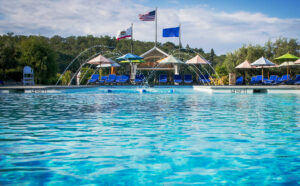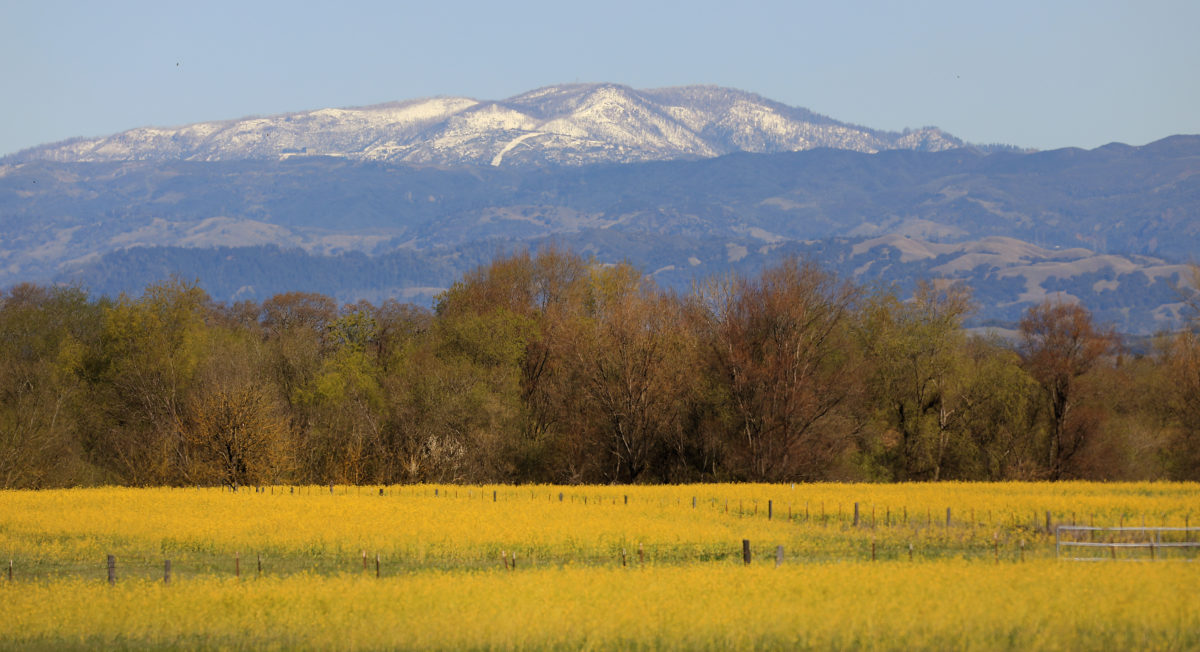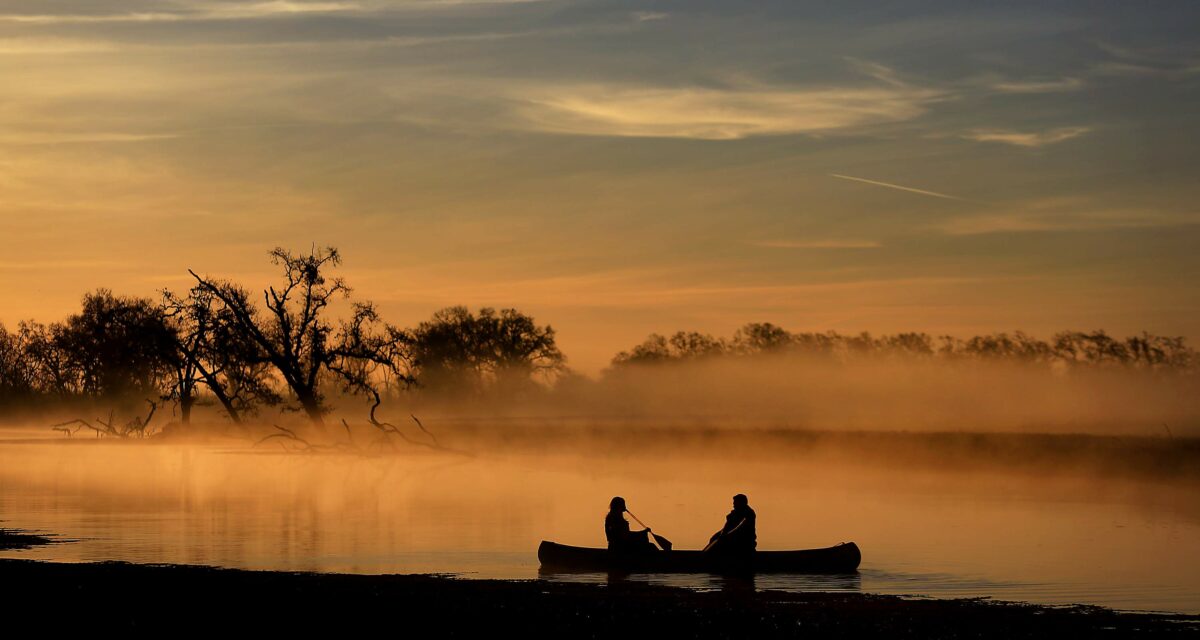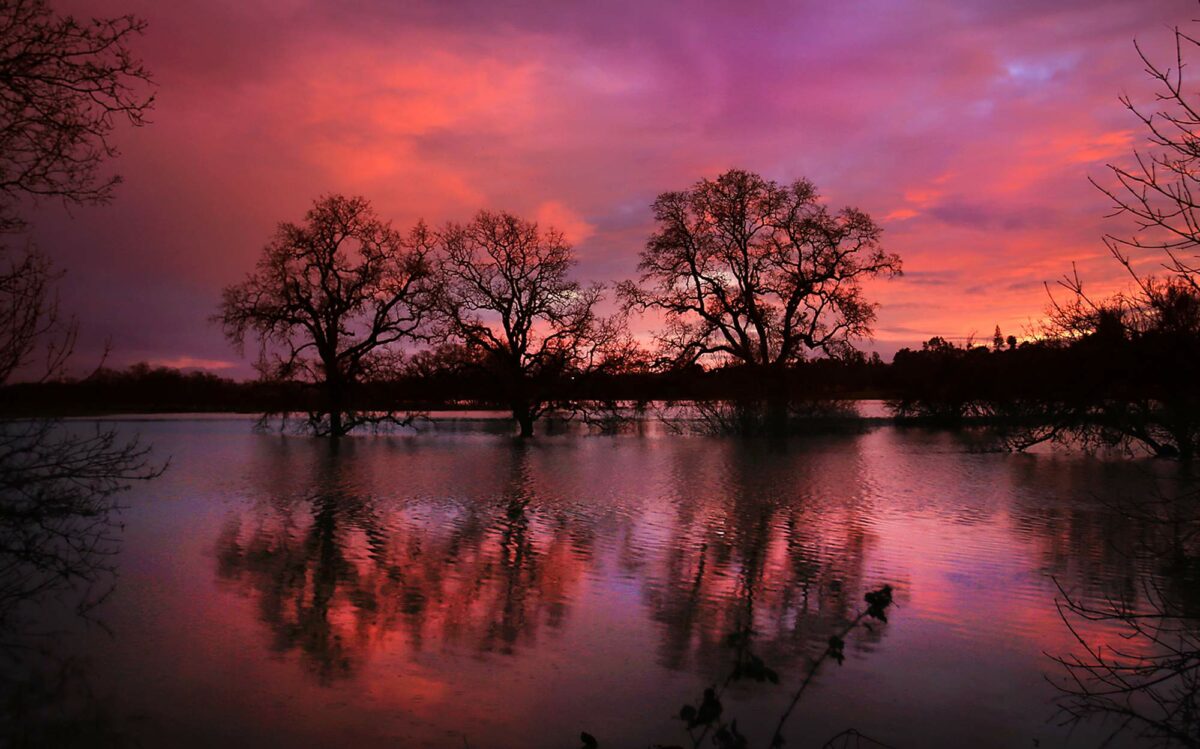Click through the above gallery to explore the Laguna de Santa Rosa.
When rain falls anywhere in Santa Rosa, Windsor, Rohnert Park, Cotati, or Sebastopol, the water will make its way to the Laguna de Santa Rosa. Sitting at the bottom of the greater Santa Rosa plain, the Laguna is the largest freshwater wetlands complex on the northern California coast. In 2011, it was designated a Wetland of International Importance. Yet how many locals could find it on a map?
To be fair, parts of the Laguna have been altered and obscured by decades of development. Sebastopol dumped its sewage there until 1978. Restoration work has been underway since the 1990s, and December 2023 saw the release of the first-ever comprehensive restoration plan for the entire Laguna, designed to guide its continued recovery.
The Laguna system is also naturally heterogeneous and ephemeral, “a collective mix of different wetland habitat types that blend and merge or shrink depending on the season,” says Anne Morkill, executive director of the Laguna de Santa Rosa Foundation, a nonprofit that works to protect and improve what’s left of the Laguna. “It’s a whole ecosystem.”
This includes oak savannas, low-lying vineyards and pastures, seasonal and year-round ponds, and various creeks, including Mark West, Santa Rosa, and Copeland, all of which feed into the Laguna’s main waterway– somewhat confusingly also named Laguna de Santa Rosa– which spills into the Russian River near Forestville, its single largest tributary.
When full, the entire complex can transform into a long, slender lake. The Laguna’s ability to slow and retain so much water in turn reduces flooding on the Russian River. “Within a couple of days of those heavier atmospheric river storms, we can see the floodplain taking shape,” Morkill says. “The water levels come up under the bridges, and out in the open fields.”
Such complexity translates to rich habitat for native species. Endangered California tiger salamanders breed in vernal pools each spring; bald eagles and osprey hunt salmon, steelhead, and other fish on the flooded Laguna; and migratory waterfowl traveling the Pacific Flyway announce their arrival in January and February, in sync with the rain. All who depend on the Laguna, including humans, await its transformation every winter.
Winter walks along the Laguna
Southern Laguna Discovery Trail: Trailhead located west of the intersection of Rohnert Park Expressway and Stony Point Road in Rohnert Park. Sonoma County Water Agency, sonomawater.org
Laguna de Santa Rosa Trail: Trailheads located off Occidental Road and Highway 12 in Santa Rosa. Sonoma County Regional Parks, parks.sonomacounty.ca.gov
Laguna Wetlands Preserve: Trailheads off Morris Street in Sebastopol. City of Sebastopol, cityofsebastopol.gov
Laguna Uplands Preserve: Located at the end of Palm Avenue in Sebastopol. Laguna de Santa Rosa Foundation, lagunafoundation.org
















